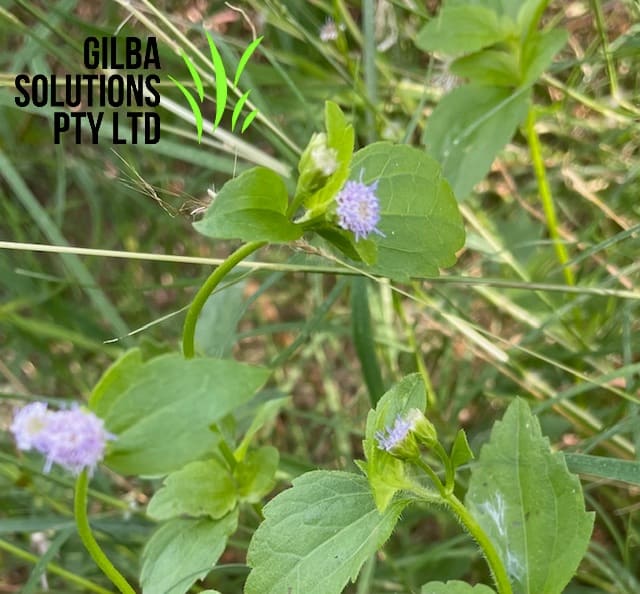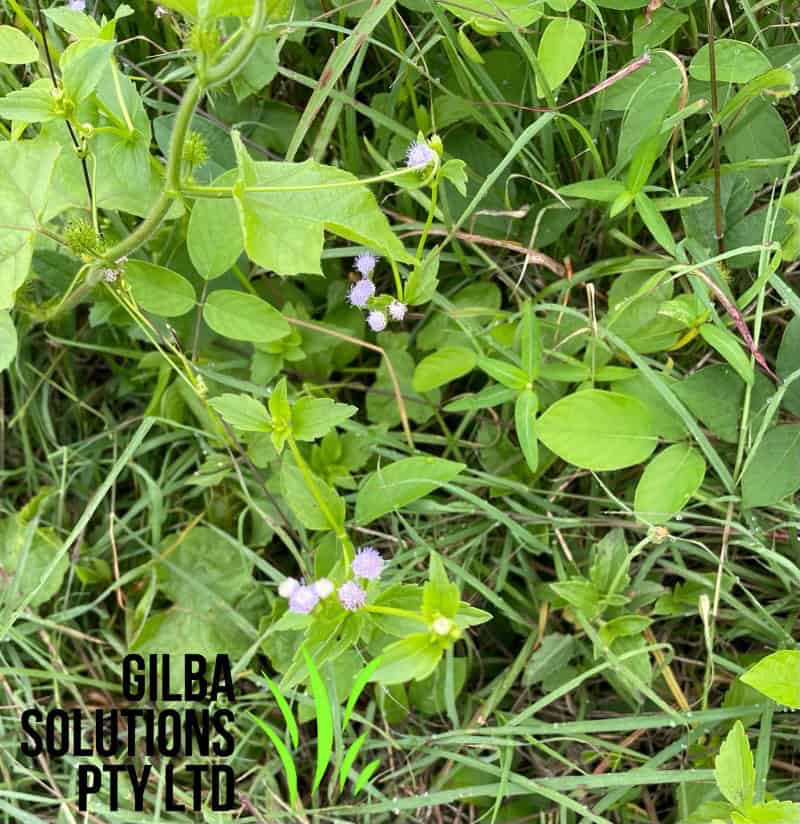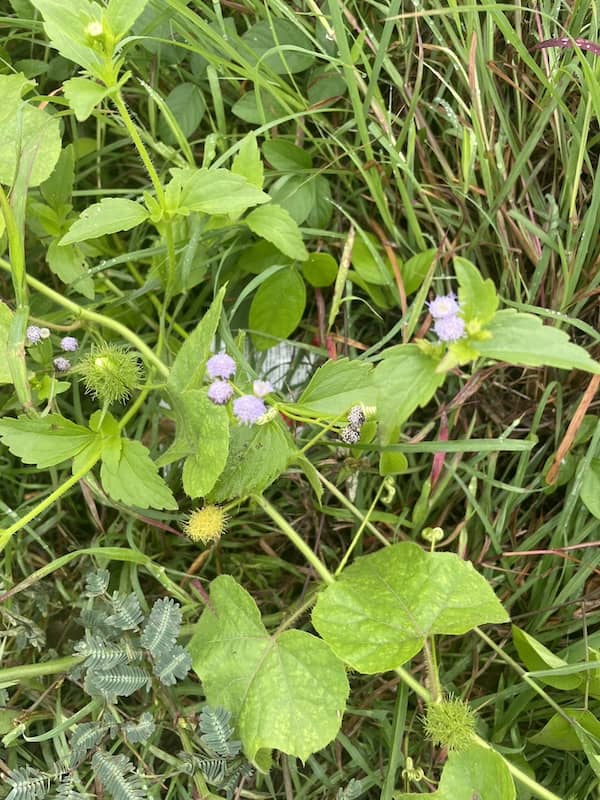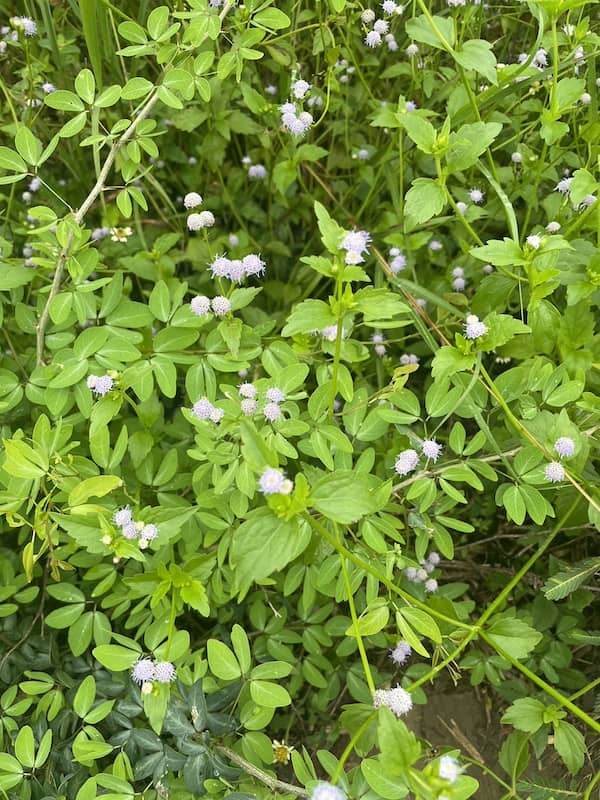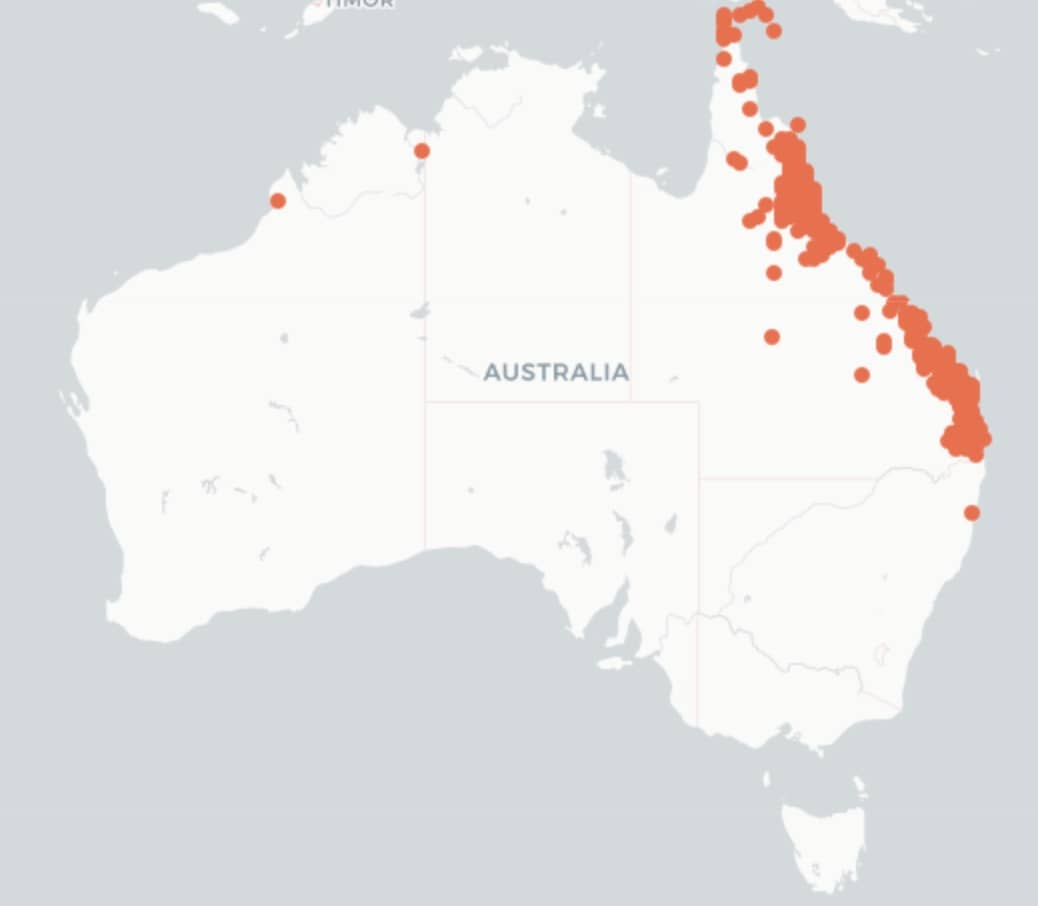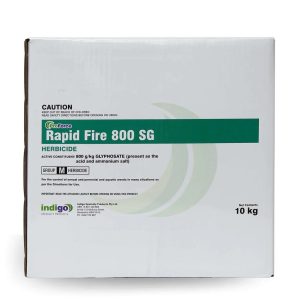Praxelis (Praxelis clematidea).
Praxelis (Praxelis clematidea) is also known as Giant Bluetop. It is an annual or short-lived perennial herb and has a fibrous root system.
This is a major weed of the tropics and sub-tropics. It tolerates partial to full sun, but does not grow well in full shade.
After you read this, you will be able to:
- Identify this weed.
- Know the habitat of Giant Bluetop.
- Know the best way to control or Giant Bluetop (Praxelis clematidea).
Why is Praxelis a Problem?
- This weed invades disturbed and undisturbed sites.
- It competes with native plants and pastures.
- Giant Bluetop contains pyrrolizidine alkaloids. These are poisonous to any stock that eat it.
- It also has allelopathic properties.
This weed is on the Alert List for Environmental Weeds. This is a list of 28 non-native plants that threaten native biodiversity and cause other environmental damage. Although it has never been seen in NSW, it is present in QLD.
The map is courtesy of The Atlas of Living Australia.
How to Identify Praxelis.
Praxelis clematidea is an upright herb. It grows from seed and also vegetatively. Its stems have a cover of soft downy hairs.
Photosynthetic Pathway: It is a C3 weed.
Category: This is a broadleaf (Dicot) weed.
Flower: The tiny flowers of Praxelis clematidea are blue or lavender. There are 35 to 40 of these flowers in clusters at the ends of hairy stems. You tend too see these flowers from January to May, but they can be present all year round in the right conditons.
Height: It grows to a height of 40 to 50 cm
Leaf length: The leaves of Giant Bluetop are hairy underneath. They are arranged opposite to each other, and are 25 to 60 mm long. The leaves have sharp teeth along their edges with 5 to 8 of these on each side of the leaves.
Leaf width: The leaves are 25 to 37 mm wide.
Reproduction.
- This weed produces seeds 3 or 4 months after it germinates.
- Once it germinates, it can produce up to 1,400 small seeds per plant.
- Most of the seeds germinate after rainfall. However, you can see this weed all year round in irrigated areas.
- The seeds need a temperature range of 20 to 30°C to germinate.
- Both high (> 45°C) and low (< 10°C) temperatures will reduce germination.
- Most of the seed germinates at the soil surface.
- No seeds will germinate at depths of more than 1 cm below the soil surface.
- The seeds have a “pappus” or a cluster of barbed bristles. The seeds spread by wind or water, or attach to animal fur and feathers, clothes, or machinery.
- This weed is also spreads vegetatively. This occurs when roots and new plantlets come into contact with the soil.
Management Calendar.
Praxelis Management Calendar | ||||||||||||
Jan | Feb | Mar | Apr | May | Jun | Jul | Aug | Sep | Oct | Nov | Dec | |
Flowering | ||||||||||||
Seed Formation | ||||||||||||
Seed Drop | ||||||||||||
Germination | ||||||||||||
Comments: If you crush the leaves they smell of cat’s urine.
Habitat: You tend to find this weed along roads, in pastures, along railway lines, in open woods, and on fence lines.
For more on weeds check out our weed ID Chart.
How to Control Praxelis.
- You can control this weed by both cultural and chemical means.
- However, due to its high rates of seed production, you will only achieve long-term control with the use of pre and post emergent herbicides.
Cultural Control of Praxelis:
Prevention is the most cost-effective way to manage this weed. So aim to keep areas free from this weed.
- We do not recommend that you hand pull this weed, even if it’s only present in small areas. This is because when you hand pull this weed the seed will fall off and will spread.
- Giant Bluetop does not grow well in shade. A thick turf cover with very few thin or bare areas will stop it from germinating.
This means:
- Mow at the right height of cut.
- Fertilise as needed. Take into account any shade, the turf type and the time of year.
- Don’t over irrigate or let your turf dry out.
- Keep on top of any disease.
Chemical Control of Praxelis.
- There are few chemical options to manage Giant Bluetop.
- BASF Freehand gives poor control as a pre-emergent.
- The University of Florida suggests the use of Envu Specticle. This does not have a label in Australia for this weed.
Non Selective Control.
- Glufosinate-ammonium provides control for 4 to 6 weeks. However it will regrow due to the limited movement of glufosinate.
- Glyphosate. You can use Glyphosate to control Giant Bluetop under APVMA Permit 11463. If you use Glyphosate, and water quality is an issue then use ProForce Manta Ray.
The following are non-selective. They also have a long term residual and stop any re-growth.
-
- Renegade. Renegade stops the germination of Giant Bluetop for up to 12 months. This reduces the need for repeat applications.
- Numchuk Quad. This gives effective post and pre emergent control for up to 12 months.
- Cortex Duo. Cortex Duo gives a rapid knockdown, and residual control for up to 3 months. It is also safe to use near trees.
Table on Non Selectives.
Product | Active Ingredient | Group | Use Rate/Ha |
Glufosinate 200 | Glufosinate-ammonium | 10 | 1 to 6 L |
Rapid Fire 800 | Glyphosate | 9 | 0.9 to 1.35 Kg |
Numchuk Quad | Terbuthylazine + Glyphosate + Amitrole Oxyfluorfen | 5 + 9 + 34 + 14 | 20 to 25 L |
Cortex Duo | Nonanoic Acid + Oxyfluorfen | 14 | 7 L/1000L |
Renegade | Bromacil | 5 | 3.5 to 6.5 Kg |

